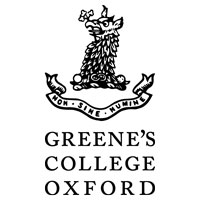For American families considering a British education for their children—or those simply curious about the differences—understanding the GCSE and A level structure can help clarify how the British system works. While both the British and American systems aim to prepare students for higher education, they differ in focus, exam timing, and progression paths. Here, we’ll break down these differences and look at how British qualifications like GCSEs and A levels can translate for U.S. college applications.
Key Differences Between the American and British Systems
In the American school system, students follow a broad curriculum that includes a range of subjects through to Grade 12 (equivalent to Year 13 in the U.K.). Students are typically assessed through a combination of coursework, standardised tests, and their Grade Point Average (GPA). There are no equivalent national exams like GCSEs or A levels, though students may opt for Advanced Placement (AP) or International Baccalaureate (IB) courses and exams in specific subjects to enhance their college applications.
In the British system, students attend primary school and then secondary school. By Year 9 (around age 13 or 14), students start choosing the subjects they wish to pursue further, leading up to GCSEs (General Certificate of Secondary Education) taken at the end of Year 11. GCSEs represent the first major set of national exams, covering a variety of subjects, often around eight to ten. Based on their GCSE results, students choose their next path, usually opting for A levels in Years 12 and 13 if they’re aiming for university, or vocational qualifications like BTECs or T Levels if they prefer more hands-on career training.
GCSEs and A levels: Specialisation vs. Breadth
After completing their GCSEs, British students focus on three or four A levels, which are typically in subjects aligned with their academic or career interests. This allows students to study their chosen subjects in-depth, achieving an advanced understanding by the time they leave secondary school at 18. This specialisation contrasts with the U.S. high school curriculum, where students continue studying a broad range of subjects, only narrowing down if they choose AP courses or a particular honours track.
How GCSEs and A levels Compare to American Diplomas and APs
For U.S. universities, the British education system is generally viewed as roughly equivalent to a U.S. high school diploma. For students aiming at selective colleges, GCSEs alone won’t suffice; they’ll need either A levels or additional qualifications like APs or the International Baccalaureate (IB) to demonstrate a higher level of academic rigour.
A levels are considered broadly comparable to AP courses in the U.S., but they are often viewed as more specialised. For students who excel in their A level studies, competitive American universities will generally see this as comparable to taking a rigorous AP track.
Applying to American Universities with British Qualifications
Most U.S. universities are familiar with the GCSE and A level system, even though the timing differs. In the U.K., university offers are generally conditional upon final A level results, but U.S. colleges make decisions based on a student’s GPA, SAT or ACT scores, extracurriculars, and overall profile. Since A level exams are taken after most U.S. admissions decisions are finalised, American colleges will look at a student’s GCSEs, AS level results, predicted A level grades, and current academic progress.
Competitive U.S. universities may require high A level grades in relevant subjects, similar to how they view AP exam scores. However, unlike in the U.K., acceptance at a U.S. university isn’t usually conditional on A level results.







